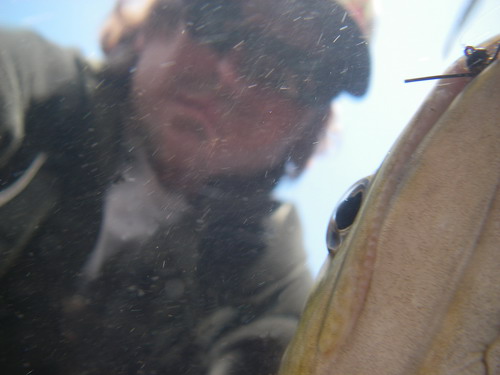Hey,
the reason an indicator doesn't slide down the leader is dependent on how it is attached. If you simply put a loop through the mono on the front of the hoppicator, then pass the fly through the loop and tighten the fly will be attached to the leader. It doesn't slide around because of the friction in the loop and mono. If the tippet end is tensioned the loop at the hoppicator is tightened and it doesn't slide. You are correct that if a fish hit the hoppicator attache in that fashion the fly could slide and indeed impair the hook set. I think this could be prevented by attaching it as you would a piece of yarn with a loop pulled inside a second loop. All of this is done to make the rig adjustalble. If a right angle system is needed or if adjustablility isn't an issue, there isn't a compelling reason not to simply tie the hoppicator on and put your nymph off the bend in the hook. I'm sure all that is clear as mud.
Anyone have a recipe for the hoppicator?. Toodles,Frogge.

